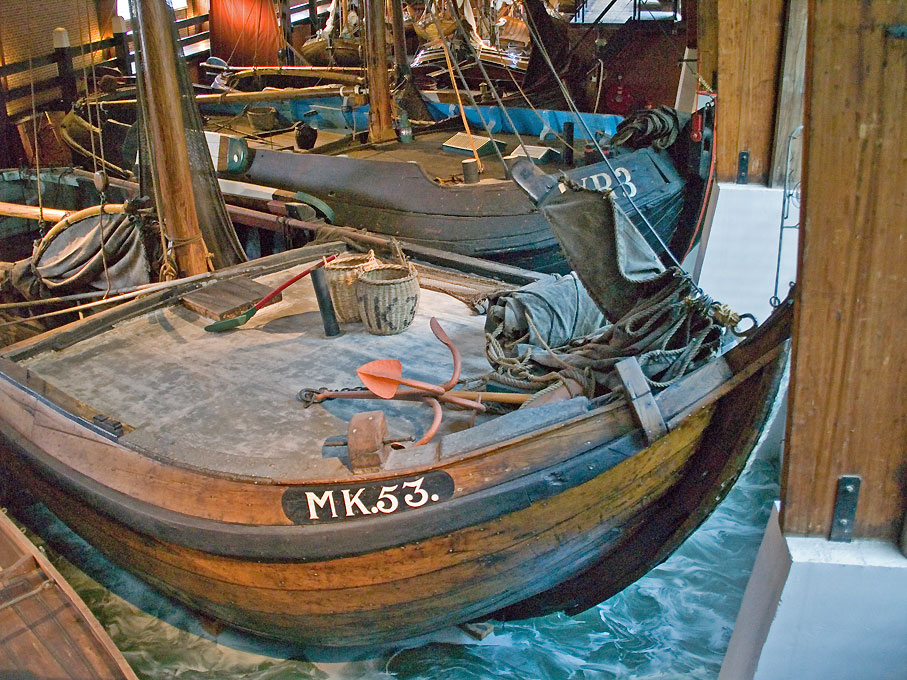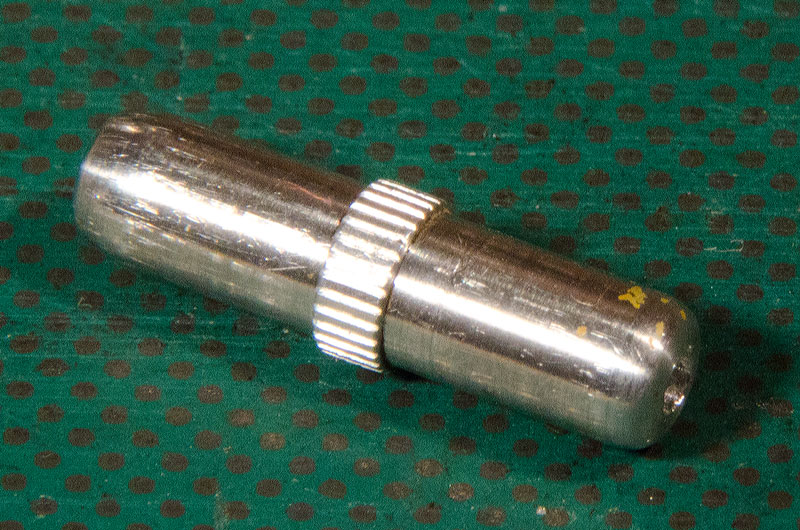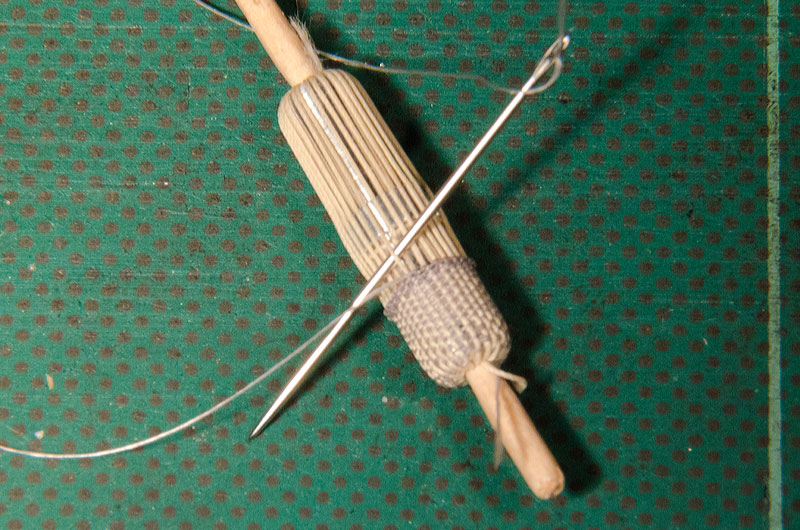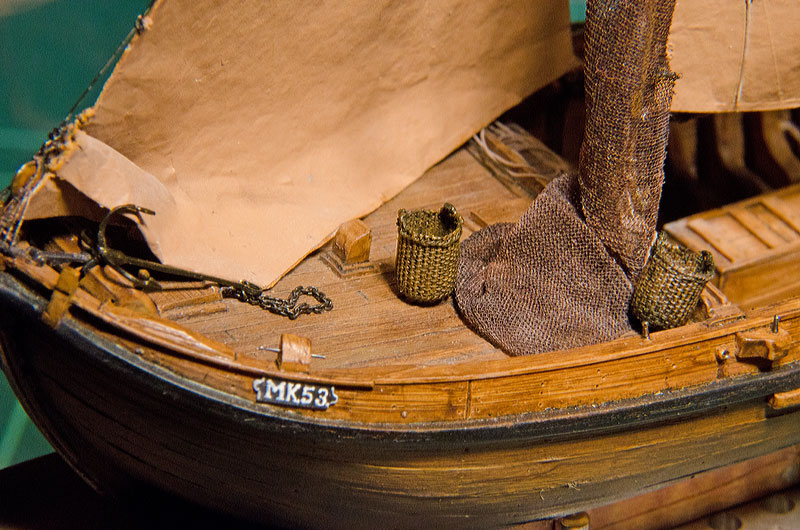Well, the loose in the sheets is sort of intentional, as the sails are depicted as being dried. A slight breeze (a cold easterly one actually) may catch the sails from time to time. You may have noticed that the main-sail sheet has been tied to one of the pins in the rails in order to prevent the boom from swinging around. Normally the main-sail sheet is belayed onto the 'hook-block', the lower block in the tackle.
To continue: A fishing boats needs some fish-baskets to store the sorted catch in.
 Fish-baskets on the Marker botter in the Zuiderzeemuseum
Fish-baskets on the Marker botter in the Zuiderzeemuseum I could not think a convincing method to fake such baskets and dropped ideas of using fabric or wire mesh – there would always be an unrealistic seam. If you have a closed or filled basket, you may sculpt it from something and imprint the woven pattern, but this does not work for empty ones. In the end, I decided to weave real baskets, well almost.
 Tool for making (fish-)baskets
Tool for making (fish-)basketsFor this I needed a tool that would give the basket its shape and allow me to handle it while weaving. So I turned the little implement above from a piece of 5 mm diameter aluminium and drilled a 2 mm hole all the way through it. It will allow me make two baskets simultaneously. The material for weaving is another issue. I would have like to use wire, but it would have been difficult to actually weave with wire. So I used some thin cotton thread for the stakes and fly-tying yarn for the weave.
 Weaving fish-baskets
Weaving fish-basketsFirst the ‚stakes’ were put into place by wind the thread around the form tool in a continuous series of loops, passing the return part through the middle of the center bore of the tool. This then was woven out with the fly-tying yarn using a sewing needle. The rim is a bit of a fake: normally the stakes would be bent back one over each other to produce a stable and decorative finishing. Here I made a double row of half-hitches with the weave, i.e. the fly-tying thread. Once this was finished, the ‚basket’ was soaked in wood stain and then a few dabs of matt varnish were applied to secure the weaving. The stakes with the exception of two on each side then were cut off flush with the rim. The remaining stakes were twisted into looped handles. Finally the stakes were cut around the hole in the bottom of tool. A bottom of the basket was faked by closing the hole with a good drop of white glue.
 The finished fish-baskets
The finished fish-basketsThe baskets then were weathered using acrylics paint (umbra). After looking at the museum-picture, I noticed that I should paint onto the baskets the registration number of the boat - so that catch can be identified at the fish auction.
One may notice on the above photograph that in the meantime also the anchor, a grab, has been installed. Finding such small chain is a challenge, but I got something suitable from a Bavarian model railway supplier. While the links were nicely soldered and blackend, they were actually round. Anchor chains, however, have oval links. With a pair of pliers I slightly squashed the links into an oval shape.
wefalck
P.S. I love the German keyboard (at least on my Mac) as I have easy access to all those weird German characters (ä,ö,ü,ß) as well as other folks' around Europe, e.g. ç,ñ,ê,é,è,à,ø,å, etc.



